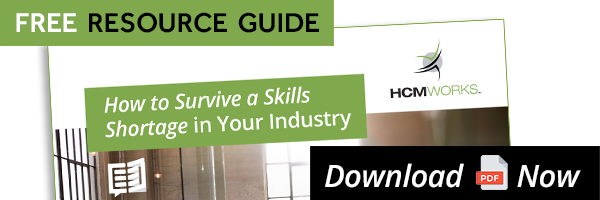As the shortage in skilled workers continues to become a more substantial global issue, it has left a great deal of businesses worried about how to fill the gaps in their workforce in an efficient and effective manner.
It sounds like a simple problem to fix, but it's actually incredibly complex. Even if you could find the workers with the right skills and qualifications, you need to consider how quickly you can get them into action and at what cost. Bad hiring decisions will have a huge impact on your organization's bottom line.
Many businesses simply don't have the time to wait, and when they do, production and operations can suffer. Luckily, there is a more effective solution - and it starts by improving fill ratios.
What does fill ratio mean?
Fill ratios are a way of measuring the new positions your business has created and the number of jobs that you are hoping to fill. In a large part, due to the uncertain economy, it's become considerably more important to consider – if your company has a low fill ratio that means you aren't able to satisfy your hiring needs.
It might seem like a cut and dry metric, but, as mentioned above, it comes with complications that can adversely affect your business in a variety of ways.
Consider time-to-fill rates, which seem to be climbing as the market shifts. This means it will take longer for you to satisfy your skill needs, and that's already on top of the delay that businesses are already suffering from due to skills shortages.
Heated competition in the job market only drags the process out further, meaning some of the jobs that you might think should be filled immediately may take weeks – or even months.
This is one of the biggest points of stress in the HR and procurement role, and with good reason. An empty position can cost your business money, waste time by holding up projects and ties up resources that could otherwise be put to better use. Luckily, there's a way to improve fill ratios.
How can the contingent workforce improve fill ratios?
As one of the many closely watched metrics in the business world, fill ratios are becoming a term we hear more and more often, especially in our industry. In fact, it's one of the most popular reasons why so many businesses begin evaluating contingent workforce managers in the first place.
Along side myriad other reasons, fill ratios are one of the reasons so many businesses are scrambling to hire contingent workers.
In an uncertain market, contingent workers come with all kinds of benefits:
- They can save you a great deal of time, as they can typically fill positions much quicker than traditional employees can.
- With a relatively quick on-boarding process, they can get started working on critical projects and in critical areas much sooner. This cuts down on resources and money spent on waiting to get started.
- Last but not least, you can stop worrying about how to hire skilled full-time workers in a job market where none can be found. Instead, you can find skilled people to work for you on a contractual basis until the market shifts again.
Naturally, contingent workers come with their own set of complications, though many companies see this as a fair compromise when considered.
When you factor in laws, regulations, contracts and terms, it can seem a bit overwhelming – that's why a successful contingent workforce management strategy is a key aspect to increasing fill ratios.
What comes with workforce management is expertise - people familiar navigating the waters of the contingent workforce. This means an understanding of current labor markets that rivals the best of them, a sound approach to improving fill ratios, and the drive to ensure your company receives the tailored assistance it needs.
Despite a struggling market, a solid strategy for the improvement of fill ratios could turn everything around, save you time and money and ensure any disruptions to your business are as minimal as possible.
Want to find out more about improving your company's fill ratio and building a well-thought-out contingent workforce management program? Contact HCMWorks today. We would love to answer any questions that you may have.




